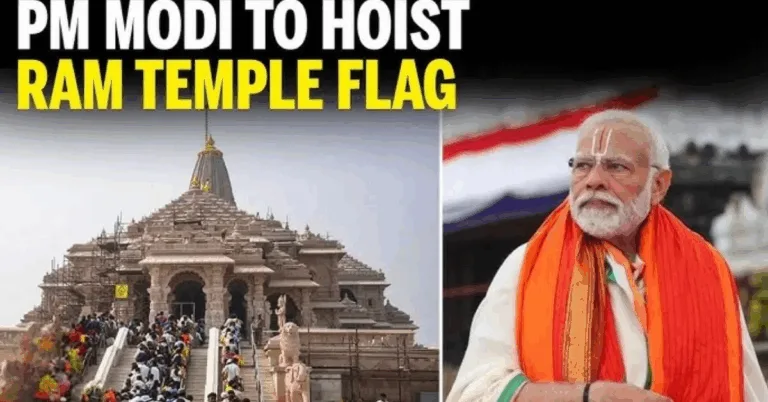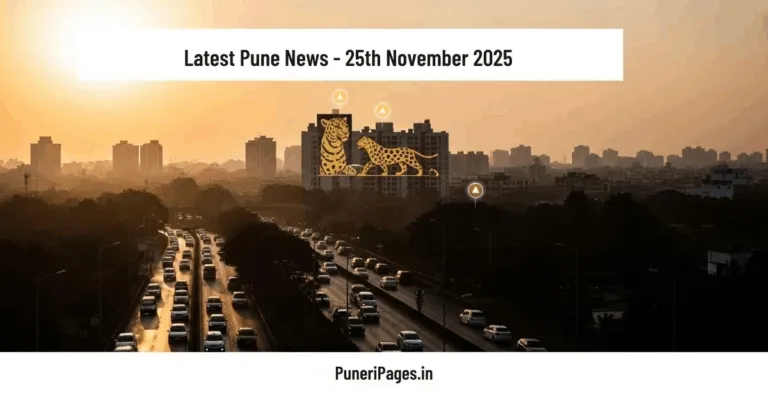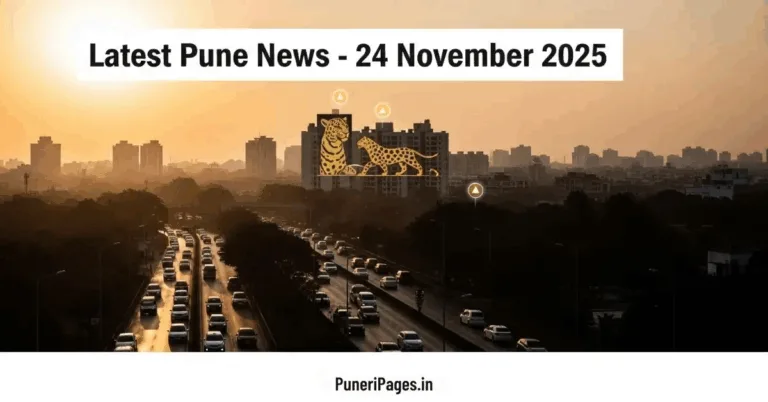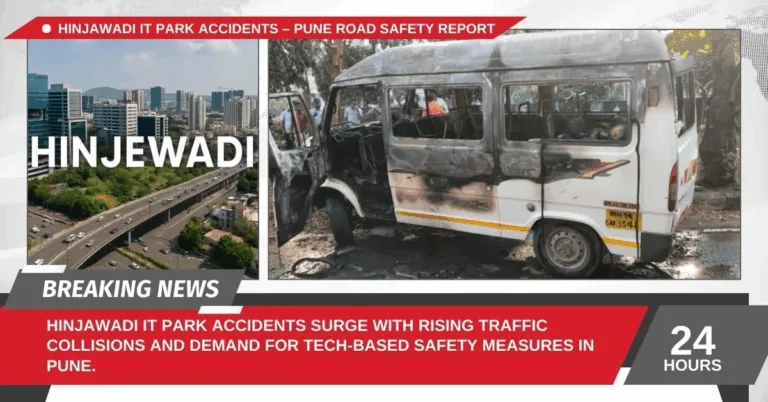
A dramatic illustration showing military tension between India and Pakistan with tanks, troops, and jets in action near the border.
India Pakistan War conflict events on May 11, 2025,
May 11, 2025 – 1:40 PM IST
- Ceasefire Violations and Mutual Accusations
- Pause in Shelling and Drone Activity Along LoC
- Scheduled Diplomatic Talks Between Military Operations Directors
- High-Level Security Meeting at Indian PM’s Residence
- Amritsar High Alert Advisory and Punjab District Updates
- Arrival of Slain Agniveer Soldier’s Body in Andhra Pradesh
- International Support for Ceasefire and De-escalation
India Pakistan War – Ceasefire Breach
May 11, 2025 – 7:40 AM IST
On May 10, 2025, mere hours after a U.S.-brokered ceasefire took effect, India accused Pakistan of resuming cross-border shelling and drone incursions, marking a swift violation of the truce in the India Pakistan War context WSJThe Guardian. Pakistan’s Foreign Ministry denied these allegations, insisting it remained committed to peace and urging both sides to resolve any disputes through dialogue . The breach underscores the deep-rooted mistrust between the two nuclear-armed neighbors and casts doubt on the durability of diplomatic efforts to end hostilities
India and Pakistan have agreed to a full and immediate ceasefire, said US President Donald Trump: Reuters reported
May 10, 2025 – 5:40 PM IST
US President Donald Trump announced on May 10, 2025 that India and Pakistan have agreed to a “full and immediate ceasefire” to india pakistan war after a night of US‑mediated talks on Truth Social Jerusalem Post. The announcement brings a sudden halt to days of tit‑for‑tat missile and drone strikes between the two nuclear‑armed neighbors Reuters. Key international actors—including US Secretary of State Marco Rubio and the G7—had intensified diplomatic efforts, urging both sides to de‑escalate and resume direct dialogue.
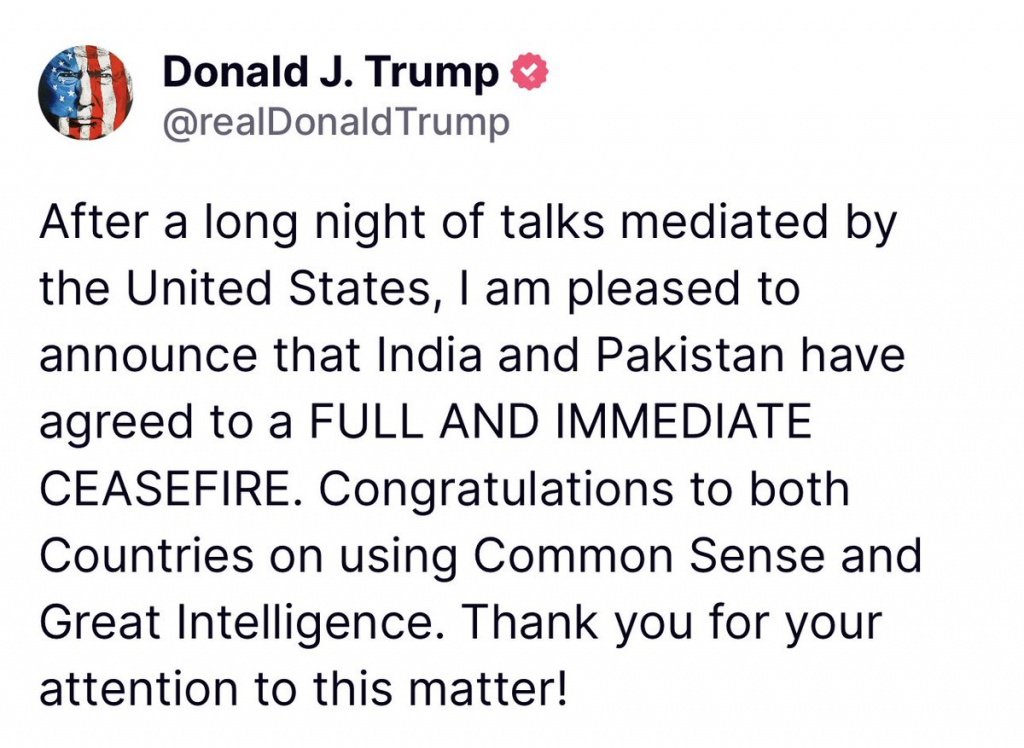
Background
Escalation of Hostilities
In early May, India launched air‑to‑surface missile strikes on Pakistani military sites, which Pakistan countered with its own drone and artillery attacks on Indian installations. Both sides reported military and civilian casualties during this exchange, marking the worst conflict flare‑up since 1999 in the disputed Kashmir region.
Diplomatic Mediation
Washington stepped in as a primary mediator, with President Trump and Secretary Rubio engaging both governments to broker a ceasefire . Simultaneously, the Group of Seven major economies publicly urged India and Pakistan to engage in direct talks, emphasizing that communication is essential to avoid dangerous miscalculations.
Trump’s Announcement
“After a long night of talks mediated by the United States, I am pleased to announce that India and Pakistan have agreed to a FULL AND IMMEDIATE CEASEFIRE,” Trump stated on Truth Social . He congratulated both countries for “using Common Sense and Great Intelligence” in reaching the agreement
PM chairs high-level meeting with military chiefs, Rajnath Singh
May 10, 2025 – 4:00 PM IST
Operation Sindoor news: India launched precision strikes overnight on four key Pakistani airbases – Chaklala in Rawalpindi, Murid in Chakwal, and Rafiqui in Shorkot – causing heavy damage to military infrastructure and assets, government sources confirmed on Saturday.

The operation followed a series of drone attacks from Pakistan across the border. In retaliation, India also hit terror launch pads and military posts in Pakistan-occupied Kashmir’s Neelam Valley and Sialkot, which were being used to deploy tube-launched drones targeting Indian positions in Jammu, according to defence sources. Meanwhile, Pakistan fired a long-range missile aimed at a strategic Indian site.
The missile was intercepted and destroyed by Indian Air Defence Systems in the Western Sector. A full battle assessment will be released after the Ministry of External Affairs briefing later today.
May 10, 2025 – 3:46 PM IST
Tensions continue to escalate between two neighbouring nations – India and Pakistan – ever since the Pahalgam terror attack in Jammu and Kashmir on April 22 in which 26 civilians were killed. India pointed at Pakistan’s role in the attack, a charge repeatedly dismissed by the neighbouring country.
Yesterday was a night of intense drone activity along India’s northern and western borders, after Pakistan launched a coordinated wave of drone attacks targeting military infrastructure across 26 locations, ranging from Leh in the north to Sir Creek in the south. Several of the targeted sites included key airfields, forward military bases, and civil aviation facilities. India successfully repelled each attack.
Multiple explosions were heard over Srinagar this morning, around 6 am. Simultaneously there have been reports of at least three explosions at three Pakistani air bases.
India on Wednesday, under the codename ‘Operation Sindoor‘, unleashed 24 missiles in 25 minutes on nine terror bases in Pakistan and Pakistan-Occupied Kashmir (PoK) in response to the Pahalgam attack that killed 26 people. In the intervening night of Wednesday and Thursday, it foiled Pakistan’s attempt to engage a number of military targets across 15 cities in northern and western India using drones and missiles.
BSF Strikes Back: Launch Pad Destroyed Amid India Pakistan War
May 10, 2025 – 6:30 AM IST
On the evening of May 9, 2025, the BSF destroyed a terrorist launch pad at Looni, Sialkot, Pakistan—directly opposite the Akhnoor area in Jammu—after unprovoked firing on its posts. This decisive action underscores the heightened dynamics of the India Pakistan War, showcasing India’s resolve to neutralize cross‑border threats .
The Retaliatory Strike
Following intense firing by Pakistani forces on BSF posts around 9:00 PM, Indian units responded with precision strikes along the International Boundary. The operation completely razed the launch pad used for drone and rocket attacks, inflicting widespread damage on Pakistan Rangers’ assets in the sector .
Strategic Implications
Analysts view the Looni strike as part of a broader tit‑for‑tat exchange that began with India’s Operation Sindoor on May 7, aimed at terrorist infrastructure in Pakistan‑administered Kashmir. By targeting launch facilities rather than civilian areas, the BSF emphasized a calibrated approach—deterring future incursions while limiting collateral damage .
Looking Ahead
As the India Pakistan War continues to unfold, this successful operation at Looni sends a clear message: India remains prepared to defend its sovereignty and respond firmly to aggression. Observers caution, however, that only diplomatic engagement can ultimately prevent further escalation along this volatile frontier
Key Developments in the Last Hour on India Pakistan War

May 9, 2025 – 12:30 PM IST
- Escalation of Hostilities: Both India and Pakistan have engaged in intensified military actions, including drone and missile strikes. India has reported intercepting multiple Pakistani drones along its western border, while Pakistan claims to have downed several Indian drones within its airspace.
- Air Defense Operations: The Indian Army has released footage showcasing its air defense systems successfully neutralizing incoming threats, highlighting the ongoing aerial engagements between the two nations.
- Civilian Impact: Cross-border shelling has resulted in civilian casualties and infrastructure damage in regions such as Poonch and Rajouri. Reports indicate at least 15 civilian deaths and over 40 injuries in Poonch alone.
- Government Measures: In response to the escalating tensions, the Indian government has canceled leaves for government employees in Delhi, Punjab, and Rajasthan. Additionally, the Indian Premier League (IPL) cricket tournament has been suspended indefinitely.
- International Reactions: Global leaders, including those from the U.S. and China, have called for restraint and de-escalation amid fears of a wider conflict between the nuclear-armed neighbors.
The situation remains fluid, and both nations are on high alert. For real-time updates, it’s advisable to follow official government statements and reputable news sources.
Indian Air Defence Neutralizes Pakistani Drones Over Jaisalmer
May 9, 2025 – 8:10 AM IST
On the night of May 8, 2025, Indian air defence systems successfully intercepted multiple Pakistani drones over Jaisalmer, Rajasthan. Residents reported hearing loud explosions and witnessing flashes in the sky during the interception. A local resident stated, “All the Pakistani drones were neutralised… There is peace and no fear among the people. We are with the Indian Air Force and Army. We heard the explosions, but none of the explosions happened on land.”
The swift action by the Indian Air Force ensured that no damage occurred on the ground, maintaining peace and safety in the region.
INS Vikrant Strikes Pakistan Navy Bases in Karachi and Ormara, Triggers Massive Fires
May 8, 2025 – 11:45 PM IST
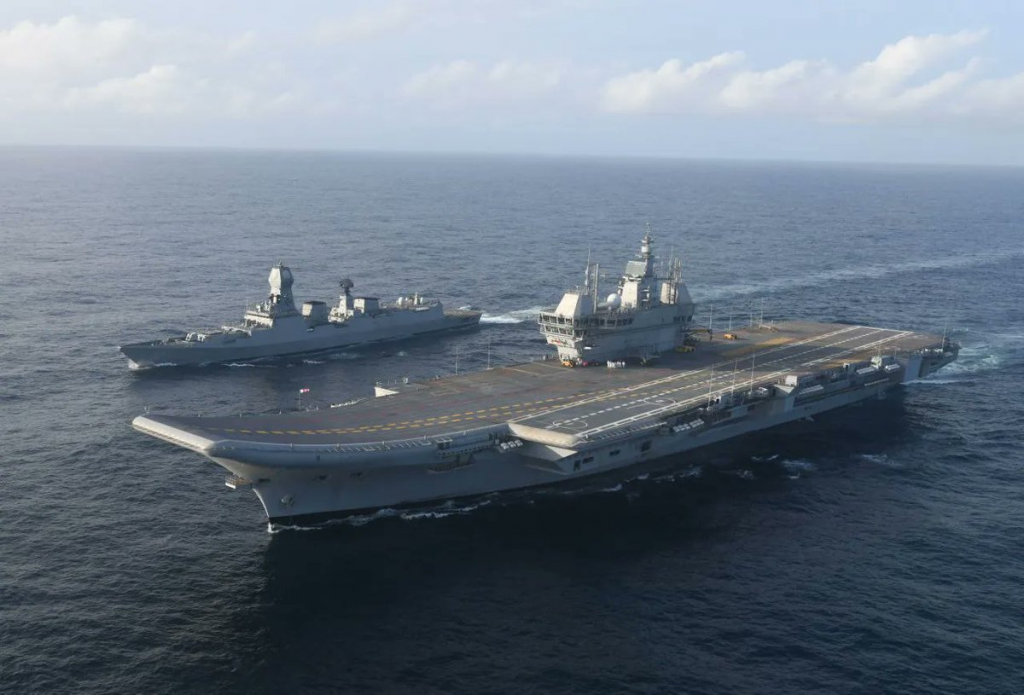
In a significant escalation of hostilities, the Indian Navy’s aircraft carrier INS Vikrant launched missile strikes on Pakistan Navy bases in Karachi and Ormara on May 8, 2025. These attacks, part of Operation Sindoor, resulted in massive fires and substantial damage to critical Pakistani naval infrastructure.
The strikes followed precision attacks by the Indian Air Force on terror camps in Pakistan and Pakistan-occupied Kashmir, marking a coordinated military response to the recent terrorist attack in Pahalgam, Jammu and Kashmir, which claimed 26 civilian lives.
Stationed in the Arabian Sea, INS Vikrant’s offensive targeted key naval installations, crippling Pakistan’s naval operations and causing panic along the coastline. Defense sources reported that the missile attacks led to massive fires at both Karachi and Ormara ports, with smoke billowing across the cities.
This marks the first time since the 1971 war that India has conducted such deep naval strikes into Pakistani territory, signaling a significant shift in India’s military strategy. The deployment of INS Vikrant, along with other Indian Navy destroyers, underscores India’s commitment to neutralizing threats and maintaining regional stability.
As Operation Sindoor progresses, the Indian Armed Forces remain vigilant in defending the nation’s sovereignty. The recent naval strikes underscore India’s resolve to respond decisively to acts of aggression and terrorism.
Verified Claims of Pakistani JF-17 Pilot Capture: Separating Fact from Fiction
May 8, 2025 – 11:30 PM IST
Social media platforms, particularly X, buzzed with unverified claims alleging that a Pakistani pilot of a JF-17 fighter jet was captured by the Indian Army in Jaisalmer. These posts, lacking corroboration from official sources, have sparked widespread speculation amid escalating tensions between India and Pakistan. But is there any truth to these claims, or are they another case of misinformation in a volatile geopolitical climate?
The backdrop to these rumors is India’s reported “Operation Sindoor” on May 7, 2025, targeting alleged terrorist infrastructure in Pakistan and Pakistan-administered Kashmir. Pakistan claimed to have downed several Indian jets, while India reported shooting down a Pakistani JF-17 near the Line of Control. Amid this tit-for-tat narrative, social media posts surfaced, claiming a Pakistani pilot was captured. However, no credible evidence—such as statements from the Indian or Pakistani governments, military authorities, or reputable news outlets—has emerged to substantiate these claims.
Misinformation is not new in India-Pakistan conflicts. Fact-checking efforts, including by India’s Press Information Bureau, have already debunked unrelated images and videos being shared as “evidence.” The absence of official confirmation suggests these claims are, at best, unverified and, at worst, deliberate attempts to inflame tensions.
In today’s digital age, where unverified posts can spread faster than verified news, it’s crucial to approach such claims with skepticism. Relying on credible sources ensures we don’t fall prey to misinformation. Until official statements emerge, the story of a captured JF-17 pilot remains just that—a story, not a fact.
Stay informed, stay cautious, and always verify.
India Downs Two Pakistani JF-17 Fighter Jets Amid Escalating Tensions
May 8, 2025 – 10:40 PM IST
In a significant escalation of hostilities, the Indian Armed Forces shot down two Pakistani fighter jets—an F-16 and a JF-17—on the evening of May 8, 2025, amid intensifying border tensions. This decisive action comes as part of India’s ongoing Operation Sindoor, a military campaign launched in response to recent terrorist attacks in Jammu and Kashmir.
Aerial Engagement Over Jammu and Kashmir
The confrontation unfolded around 10:40 PM IST when Pakistani aircraft attempted to breach Indian airspace over Jammu and Kashmir. Indian air defense systems promptly responded, successfully intercepting and neutralizing the intruding jets. The F-16 was reportedly downed near the Sargodha air base in Pakistan, a key military installation, while the JF-17 was engaged over Indian territory.
As of May 8, 2025 11:05 PM
Recent Military Escalation
- Indian Strikes (Operation Sindoor): On May 7, India launched “Operation Sindoor,” hitting nine suspected militant camps in Pakistan and Pakistan-administered Kashmir. India released videos showing these early-morning strikes, claiming about 70 militants killed. Pakistan denied any terror bases were hit and said 26 civilians died. This cross-border attack was India’s biggest in decades.
- Pakistani Response: Pakistan’s military countered with heavy firing across the Line of Control and elsewhere. Islamabad reported shooting down 5 Indian aircraft on May 7 (a claim India dismissed) and claimed to have downed dozens of Indian drones later (29 by May 8). Pakistan’s army spokesperson said it “neutralised” incoming Indian drones and vowed to retaliate “at a time, place and manner of its choosing”.
- India Foils Attack: India reported that overnight May 7–8 Pakistan fired missiles and drones at 15 northern and western cities (from Kashmir to Punjab and Gujarat). Indian air-defence systems (including the S-400 and Harpy drones) “neutralised” these threats. Debris confirmed the attempted Pakistani strikes. The Indian military then struck back by targeting Pakistani air-defence radars and missile sites (including in Lahore) with equal intensity.
- Ceasefire Violations: Shelling and mortar fire along the Kashmir Line of Control have surged. India said Pakistani fire killed 16 innocent civilians (three women and five children) in Jammu & Kashmiritv.com. India says it responded to silence these posts. Both sides report dozens of cross-border incidents daily, raising fears of broader conflict.
Official Statements and Claims
- India’s Position: The Indian government framed its actions as defensive and precise. The Ministry of Defence and Army described the response as “focused, measured and non-escalatory,” stressing that it did not target Pakistani civilians. India released a formal statement: Pakistani missiles and drones aimed at Indian towns were “neutralised by the Integrated Counter-UAS Grid and Air Defence systems”. The armed forces confirmed they then struck Pakistani air-defence radars and missile sites “with the same intensity”. Defence Minister Rajnath Singh said all targets were “destroyed with exactness” and “no civilian population was affected”.
- Pakistan’s Position: Pakistani leaders condemned India’s strikes as a “blatant mistake” violating its sovereignty. Prime Minister Shehbaz Sharif warned India it “will have to pay the price” for the attack. Pakistan’s military reported it downed Indian jets and drones (using both Western and Chinese-made fighters) and claimed India even sent a drone against a Sikh shrine (labeled “abhorrent” by the army). Defence Minister Khawaja Asif said Pakistan would retaliate only against Indian military targets, not civilians. Pakistan denies supporting any militants in Kashmir and insisted none of India’s targets were legitimate terrorist camps.
Diplomatic and International Reactions
- Global Calls for Restraint: World leaders and the UN have urgently appealed for de-escalation. UN Secretary-General António Guterres expressed “great concern” over the strikes and urged “maximum military restraint” from both sides, warning that “the world cannot afford a military confrontation” between nuclear-armed neighbours. The U.S. and other major powers echoed this. U.S. Secretary of State Marco Rubio monitored the situation closely and stressed a peaceful resolution. China, Russia, Japan, the UK and others publicly called for calm and restraint. Even as Pakistan warned it would respond “at a time of its choosing”, diplomats from Europe, the UAE and elsewhere urged dialogue over conflict.
- UN and Diplomatic Moves: No new UN resolution has been announced, but reports say the UN Security Council held closed consultations on the crisis. Pakistan has briefly paused IMF talks amid the crisis, and global finance markets have reacted nervously. The U.S. Consulate in Lahore even told staff to shelter in place as tensions spiked.
Media Reports and Analysis
- International Media: Reuters, BBC and other outlets have provided real-time coverage of the clash. Reuters live updates detail each strike and counterstrike, quoting officials from both sides. Global media highlight the unprecedented scope of these exchanges (air strikes reaching Punjab for the first time since 1947) and the high stakes of a nuclear flashpoint.
- Regional Press: Indian outlets (NDTV, Times of India, etc.) have closely followed India’s official briefings. NDTV published the full Indian statement on the counter-strike, including lists of the Pakistani locations hit and confirmation of no civilian casualties. Pakistani media (Dawn, Geo News) emphasizes Pakistan’s suffering (31 civilians killed, in their account) and portrays India’s actions as reckless. Dawn’s live blog quotes Pakistani military briefings (29 drones downed, “abhorrent” drone attack on a shrine).
- Fact-Checks: Both sides accuse the other of misinformation. For example, NDTV noted Pakistan’s claim of capturing Indian soldiers was debunked by news agencies. Indian officials rejected Pakistan’s reports of downed F-16s and fighters as “misinformation”. Analysts caution that casualty figures are unverified, and civilian harm is still being assessed by independent monitors.
Public and Social Media Response
- Social Media: Official accounts and hashtags have amplified each narrative. The Indian Army tweeted a detailed “Operation Sindoor” thread with hashtags like #JusticeServed, listing each struck target. Pakistan’s army channels similarly highlighted their claims. Both sides’ social media saw patriotic fervor and blame. Hashtags such as #ModiSpeech, #Tarar (Pak FM), and #OperationSindoor trended regionally. Verified officials (PM Modi, FM Jaishankar, PM Sharif, FM Qureshi, DG ISPR, etc.) have posted strategically, but their statements are reported through news media rather than direct public posts.
- Public Reaction: Populations on both sides showed anxiety. Reuters reported panic buying in Indian Punjab as rumors swirled. Pakistani cities like Karachi and Lahore saw alerts; flights were briefly halted in some airports (Karachi, Lahore, Sialkot) as a precaution. Domestic political parties in both countries have called emergency meetings; in India an all-party briefing was held to discuss the crisis. Civil society groups (including Amnesty International) have urged both armies to protect civilians under international law.
